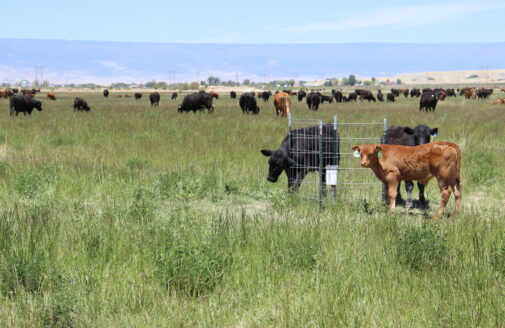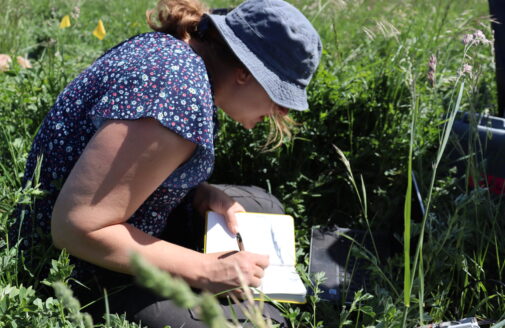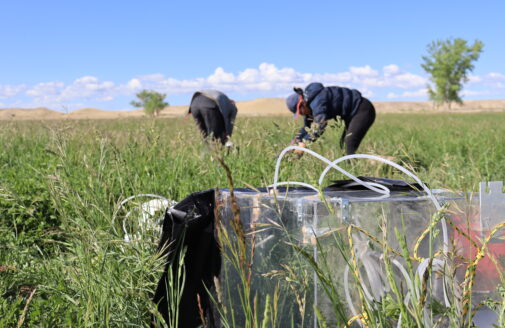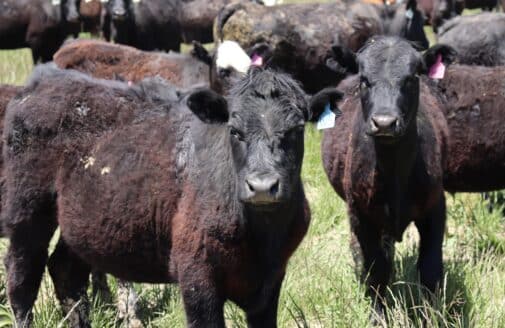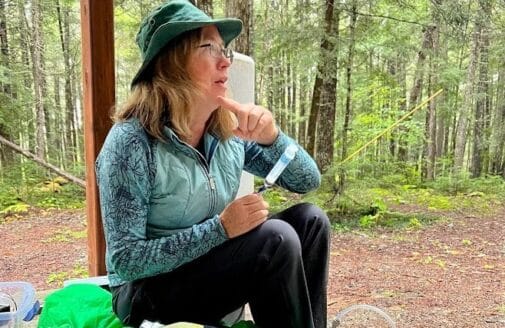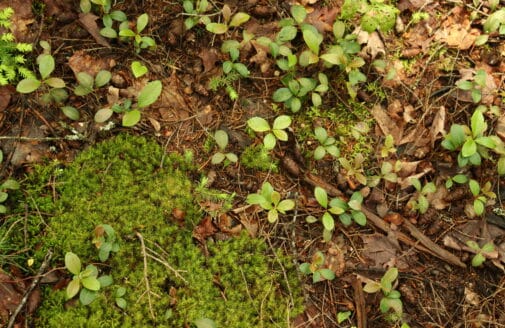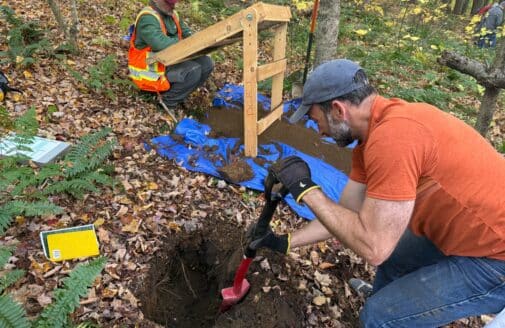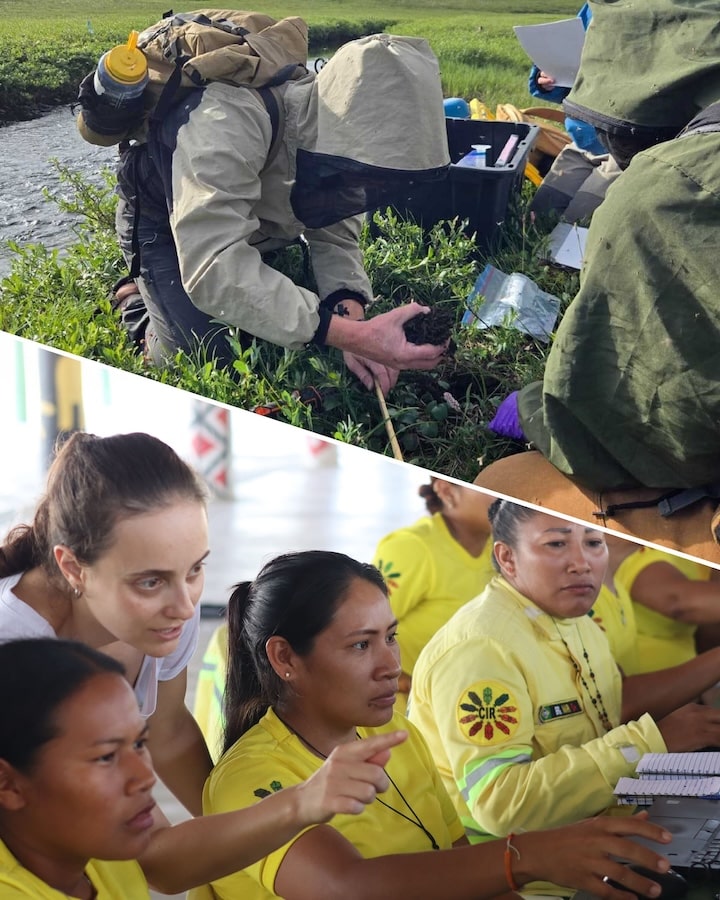A pathway to more sustainable rangelands
Effective policies can help improve the health of rangelands and leverage their ability to act as a natural climate solution.
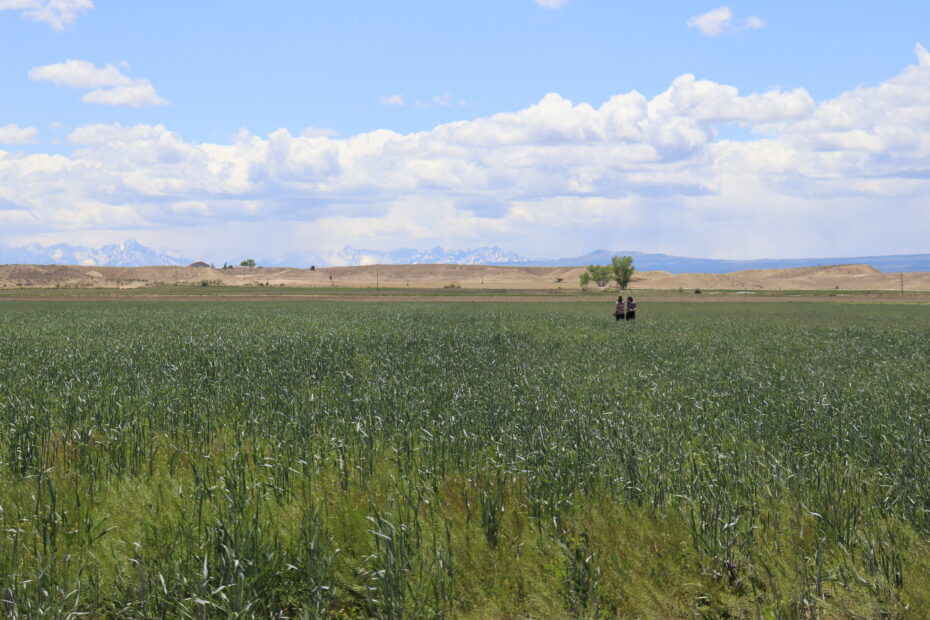
Woodwell scientists take measurements from a pasture in southwestern Colorado.
photo by Sarah Ruiz
Millions of acres of rangelands managed by the U. S. Bureau of Land Management are not meeting land health standards, according to a recent report from watchdog organization Public Employees for Environmental Responsibility. Range degradation is also happening on U.S. Forest Service and privately held lands. Healthy rangelands are vital to the economic and public health of the communities that depend on them, which includes ranchers, Indigenous nations, and recreationists. Failing rangelands undermine these groups, lead to loss of habitat, and result in landscape degradation, and they also minimize our ability to mitigate climate change through carbon sequestration. Taking policy action to ensure the longevity of rangelands has the potential to increase climate mitigation potential and improve the health of U.S. ecosystems.
What is healthy rangeland?
Covering more than 31 percent of the U.S., rangelands are any wilderness or rural open space grazed by domestic or wild herbivores, including grassland, shrubland, and pasture. Rangelands provide a wide array of ecosystem services, including food for livestock, habitat for wild species, and climate regulation through the uptake of carbon dioxide (CO2) by growing plants and the transfer of this sequestered carbon into the soil (as soil organic carbon). Globally, rangelands store 20 percent of the world’s soil organic carbon and U.S. rangelands may have the capacity to offset 2.5 – 3 percent of U.S. CO2 emissions from fossil fuels, but only if the rangelands are considered in “full health”.
Improving monitoring to foster healthy rangelands
The capacity for rangelands to sequester carbon is increasingly threatened by drought and overgrazing and there is an urgent need for improved land use planning to tackle these issues. However, the lack of an integrated monitoring system makes it difficult to know what changes to land management are needed on the individual ranch scale.
An important first step, then, to fostering healthy rangelands is establishing an open-access region-wide range monitoring platform that ranchers can use to verify and track changes in rangeland ecosystem condition and carbon storage across entire land units. Large-scale monitoring for these indicators will make it clearer where land is being effectively managed, and where it is not.
Dr. Jennifer Watts focuses on how climate change and human disturbance are affecting vegetation, soils, and the carbon cycle. She and her colleagues are currently working to develop a monitoring platform to provide stakeholders access to land health information.
“Having free, easy access to long-term information about lands will empower us to become fully aware of how our land use is impacting the health and future of rangeland ecosystems,” Dr. Watts explains. “This gives us the ability to invest in alternative management approaches that provide a more sustainable future for our lands while protecting our communities and ecosystems in the face of climate change.”

Drs. Jon Sanderman and Megan Machmueller dig a pit to take soil samples.
photo by Sarah Ruiz
Building a system of rewards and incentives
Reward systems can then be established across different scales to incentivize land use that improves ecosystem services. Monitoring platforms can be used in conjunction with clear land management directives to ensure rangelands are managed in a way conducive to ecosystem health.
Overgrazing is one of the biggest drivers of rangeland carbon loss and land degradation. It not only undermines the carbon storage potential of rangelands but also compromises other ecosystem services and limits future grazing capacity for livestock and wildlife. Consequently, it is in the best interest of everyone–ranchers, conservationists, Indigenous groups, and recreationists–to ensure that grazing on rangelands is managed in a way that increases vegetation cover, diversity, and rooting depth, while minimizing bare ground. Grazing practices can be addressed through process-oriented approaches.
Practicing management intensive grazing could help limit overgrazing. This adaptive technique involves concentrating grazing animals in one place for a very short period of time and then moving them to a different location. This ensures that the ecosystem has a chance to recover and regrow following a concentrated period of grazing. Ranchers will need technical assistance to develop grazing and management plans. Given that this is a practice under the Environmental Qualities Incentive Program (EQIP) it is likely to receive a boost in funding from the 2022 Inflation Reduction Act. Building more programs, at the federal, state, and county level, that reward ranchers for shifting grazing techniques to those that support the sustainability of ecosystem services and provide equipment needed to support fencing and water distribution could be a way to incentivize more effective land management.
Manipulating grazing fees to more accurately represent the costs associated with maintaining the integrity of rangelands is another option for fostering healthier rangelands given the current low fees and stagnant pricing of grazing fees. Furthermore, revenue generated from increasing grazing fees on public lands could be used to support a monitoring system for all U.S. rangelands.
Most stakeholders agree that better rangeland monitoring, soil health, and payment for land improvements are important, but a big question is how to actually pay for these services across multiple levels of governance. Exploring how to leverage different options for funding, then, will be the necessary next step in supporting thriving rangeland ecosystems and reaping the potential climate benefits.




